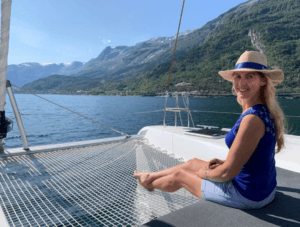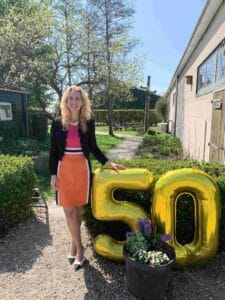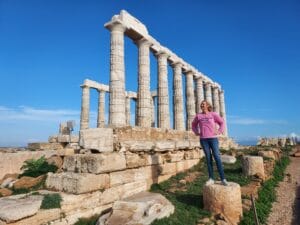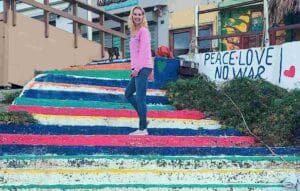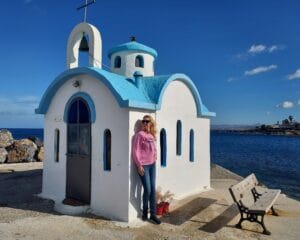We made the crossing with our catamaran from the island of Sardinia to Rome! Back to the mainland of Italy.

‘Huh? Rome isn’t by the sea, is it?’, I hear you thinking. That’s right, but the river Tiber (in Italian: Tevere) that flows into the Mediterranean Sea, is the opening that will bring you far into land, towards Rome.
Everytime you make a longer sailtrip, especially a crossing over sea, from an island to mainland for example, you have to prepare, because there are no or few fallback options in case of emergencies.
The Big Five
You can plan a lot when travelling (the next harbor, food on board), but weather is a different game. You can’t plan it, you can just try to find the right time slot while hoping the weather ‘holds up to the forecast’ (which is of course a strange thing to say!).
‘The Big Five’ we always check are:
- Wind speed (20-25 knots is ideal)
- Wind direction (if you are sailing in an easterly direction, north of south wind is the best)
- Swell direction (waves coinciding with winddirection is the most desired)
- Current (in your advantage or disadvantage for 6 hours, according to tides)
- Weather clarity (hours of daylight, sunshine is of course great, rain is not a problem, fog is)
And in November, we have less hours of daylight available for sailing than during summertime and more strong winds and less sunshine, so preparing is key.
In this case, the distance would be 230 kilometers, which is 130 nautical miles (1,8 kilometer = 1 seamile or nautical mile nm). When you sail on average 5 nm per hour, that would mean 26 hours of sailing in total, which includes 1 night of sailing for this crossing.
We stayed in Porto Cervo at the end of October, a harbor at the eastcoast of Sardinia. Mondaymorning a strong southern wind would start to blow from 11.00h. That would be perfect, because that would mean we would arrive 13.00h the next day in Rome and at 18.00h it would be dark, so we also had a few extra hours in case we had less wind than expected or had to avoid ferries on the way, fishermen/fish farms, wait for tankers in the shipping lane between Corsica/Sardina and the main land of Italy, etc.
Italian sweets (dolce)
We made arrangements with Blue Dolpin Marina Rome, located the river Tiber, who offered us a good price and a good berth for our catamaran. We bought some ‘dolce’ (Italian sweets) in the local pastry shop in Sardinia for the 26 hours to stay awake during difficult times (long live sugar!) 😉.
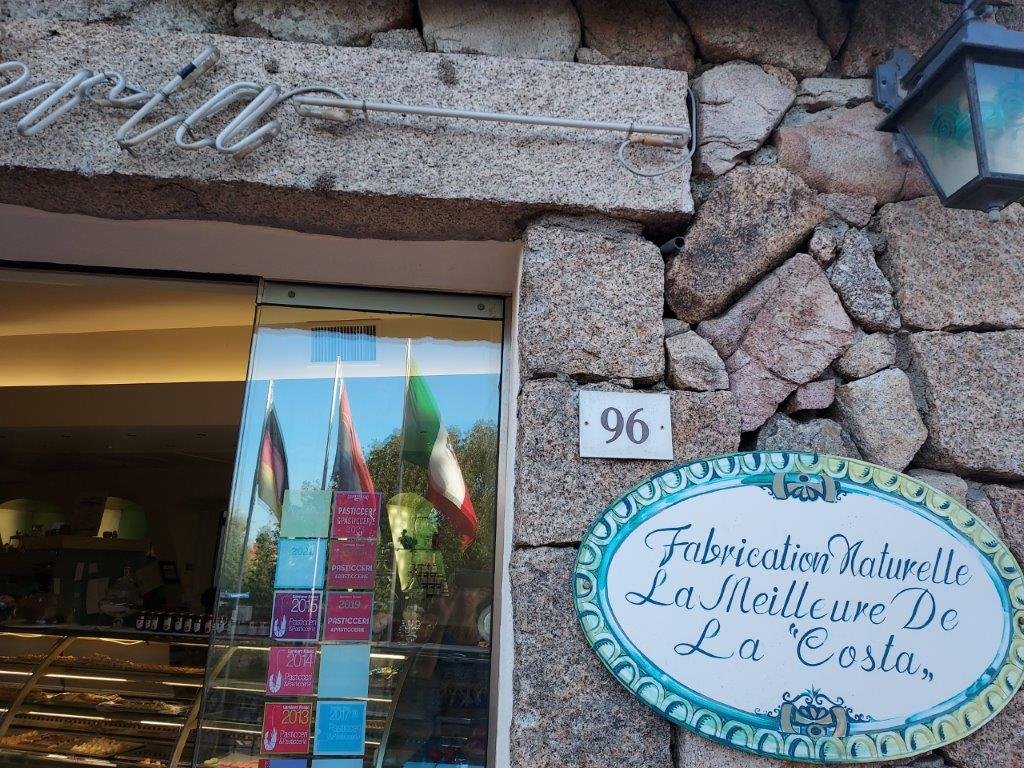

And off we went at 11.00h!

Soon we noticed that we wind was going to be stronger than the maximum of 25 knots that was predicted. At the start at 11.00h it was already 28 knots and often going to 32 knots in the next hours. Our needed speed of 5 knots, sometimes was 7 to 8 knots now! So we put a reef in our sail, which means lowering the sail a bit, making it ‘smaller’ so the windforce would not be pressing too hard on the sail and on the mast.
Later that day we often had 35 knots to 38 knots, so we put in the second reef. Luckily the wind also would turn more to the West at the beginning of the night (from South to Southwest), so the wind would be in the back of the ship and gently pushing us forward instead of making the strong waves pounding against the 12 meter long hulls!
We had full moon that night, which was very welcome, because that gave a bit of extra light (in case of unexpected small fisherboats during the night or fishersticks or -balls that they put in the water to relocate their fishingnets. They are hardly visible during the night!).
The crossing went very smoothly, we sailed on average 6,5 nm per hour, which made our trip last only 21 hours instead of 26 hours. So the expected time of arrival at 13.00h became 8.00h! We called Blue Dolphin at 8.00h, they were very friendly and said no worries: we will be there at 8.15h.
It’s interesting, when you arrive from sea into a river to see the color of the water changing. In this case from greenblue to browngreen. You actually can see pretty good where the line of color is.

You learn a lot when travelling over water: for instance the fact that the Mediterranean sea is 1 sea, but the different parts of that sea have different names, this area between Sardina and the main land of Italy is called The Tyrrhenian Sea (in Italian: Mar Tirreno). Also the region where Rome is in, is called Lazio.

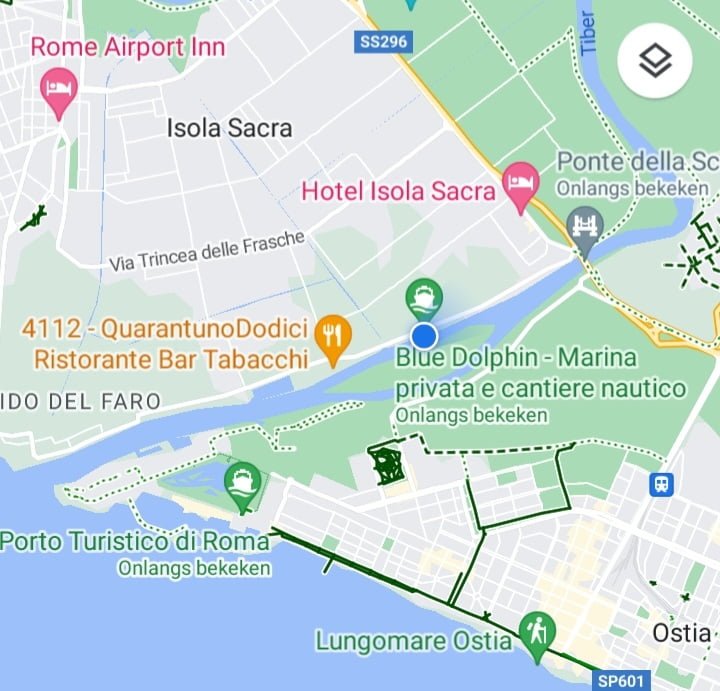
The crew of Blue Dolphin welcomed us and helped us moor the boat to the site. We haven’t stayed a lot in rivers during the 4 years we have the catamaran, maximum 10 times I think. We really liked staying here:

We ended up staying here a week, because there was so much to see! This part of Italy is like an openair museum, because it is so close to the remains of the ancient Roman Empire. So we took a lot of trips with our e-bikes and when we arrived back on the ship, there was always another sunset to watch at this river facing the west:


Rome
Gilles and I have been to Rome together before in 2018, it’s a great city to visit! But to do that again, while there are so many other areas to see during our worldtrip is another thing. I am sure that the Colosseum hasn’t change much since 2018 😉.
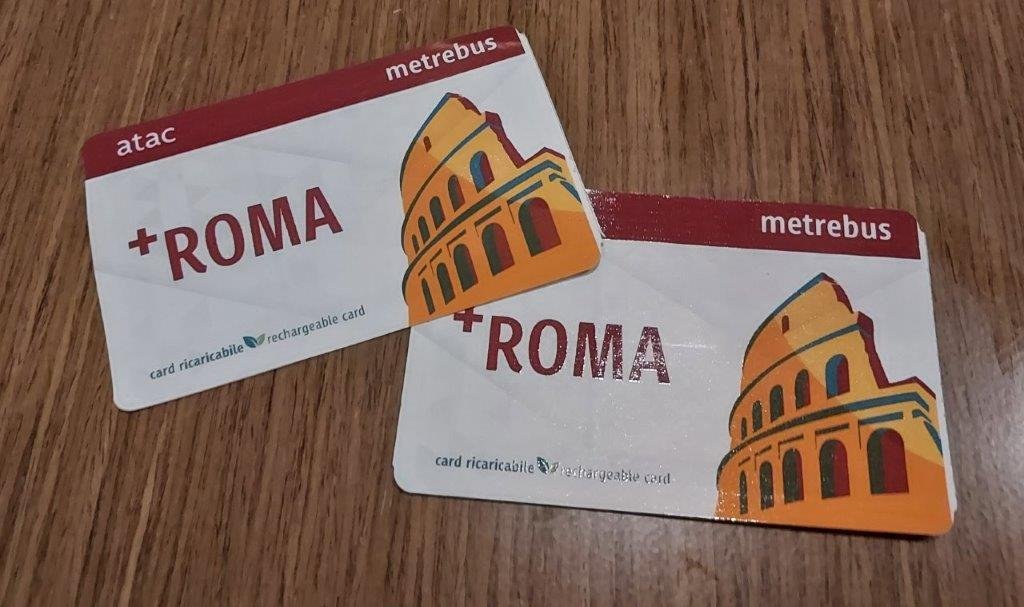
And we were told that the well preserved remains of the impressive old port city of the Roman Empire (called Ostia Antica) would be next to our harbor. It is one of the best preserved Roman cities in Italy. That drew our attention and we made plans to visit that Archaeological Park and we were not disappointed!
Ostia Antica
We took our e-bike and step and drove through the woods where a lot of the beautiful umbrella pines (or parasol pine) were growing. A typical tree in this part of the Mediterranean Sea and already planted a lot during the ancient Roman Empire. And when we left the woods, we saw the Archaeological Park, it was huge!

This port city was founded for trade in the 7th century BC and in the 2nd century AD, the port city has grown enormously to 50,000 inhabitants of whom 17,000 were slaves. Mainly traders, boat owners and sailors lived in this bustling city at the height of the ancient Roman Empire. The city was located on the Tiber River and the name ‘Ostia’ is derived from the Latin ‘ostium’, which means river mouth.

Typical of Ostia as a transshipment port is the presence of a large number of horrea, warehouse complexes. These were mainly used for storing grain. The ground floor of the Great Horrea alone could hold approximately 6,500 tons of grain, enough to supply about 15,000 people with grain for a year. But other goods were also stored, as evidenced by the presence of dolia, large earthenware vessels for storing oil or wine.

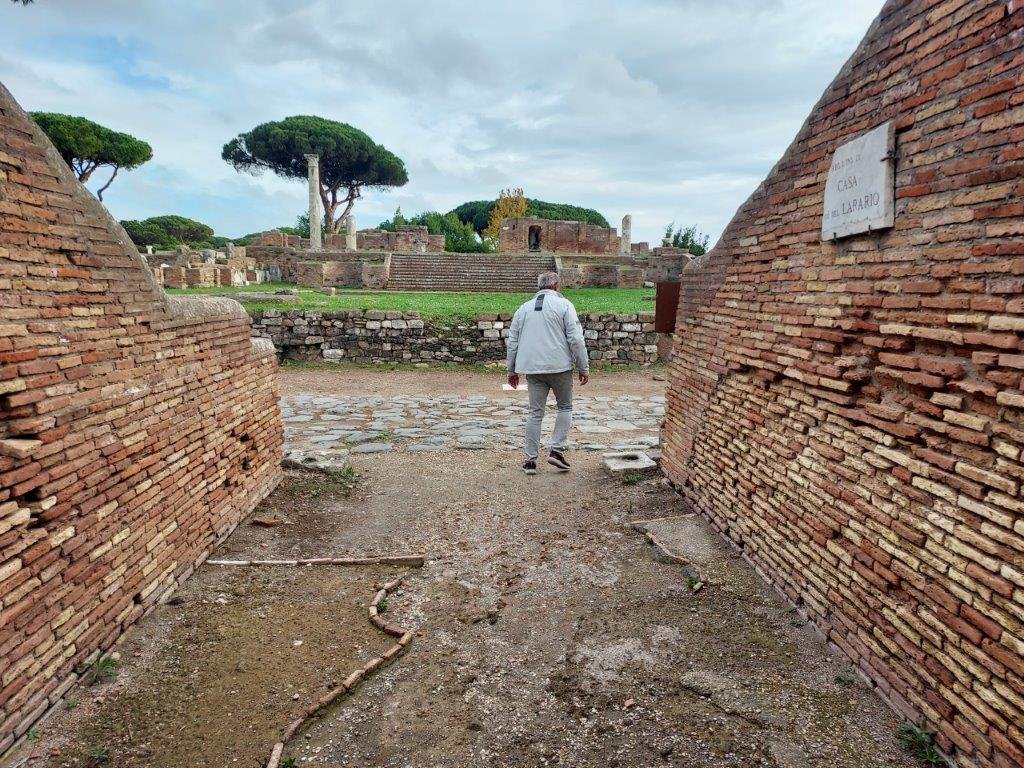
In Ostia there were at least 18 complexes of thermal baths, with black and white mosaic floors that are still in excellent condition.
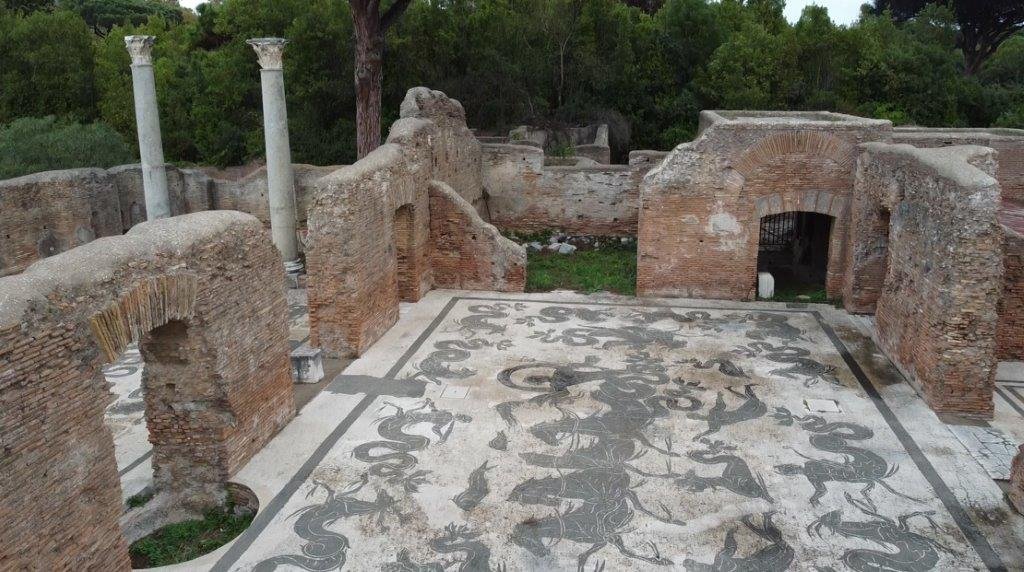
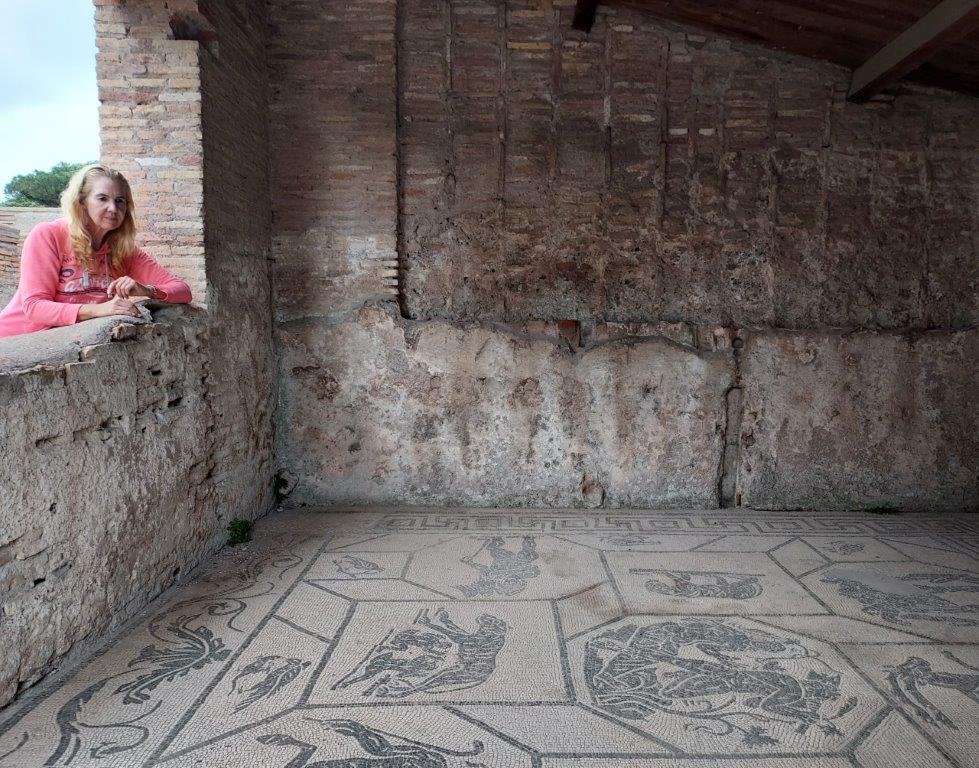
Temples and other religious buildings were also very much present, because as a cosmopolitan port, Ostia had a wide variety of religions.

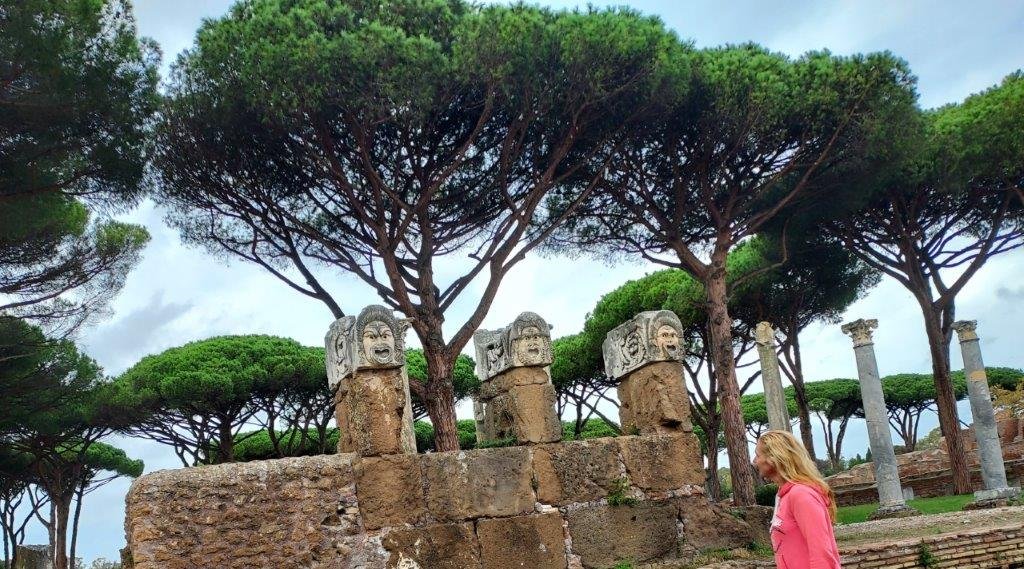
The heyday of Ostia lasted until the beginning of the third century. Ostia gradually lost its importance due to the rise of Portus, a town that had arisen at the newly dug ports three kilometers north of Ostia.

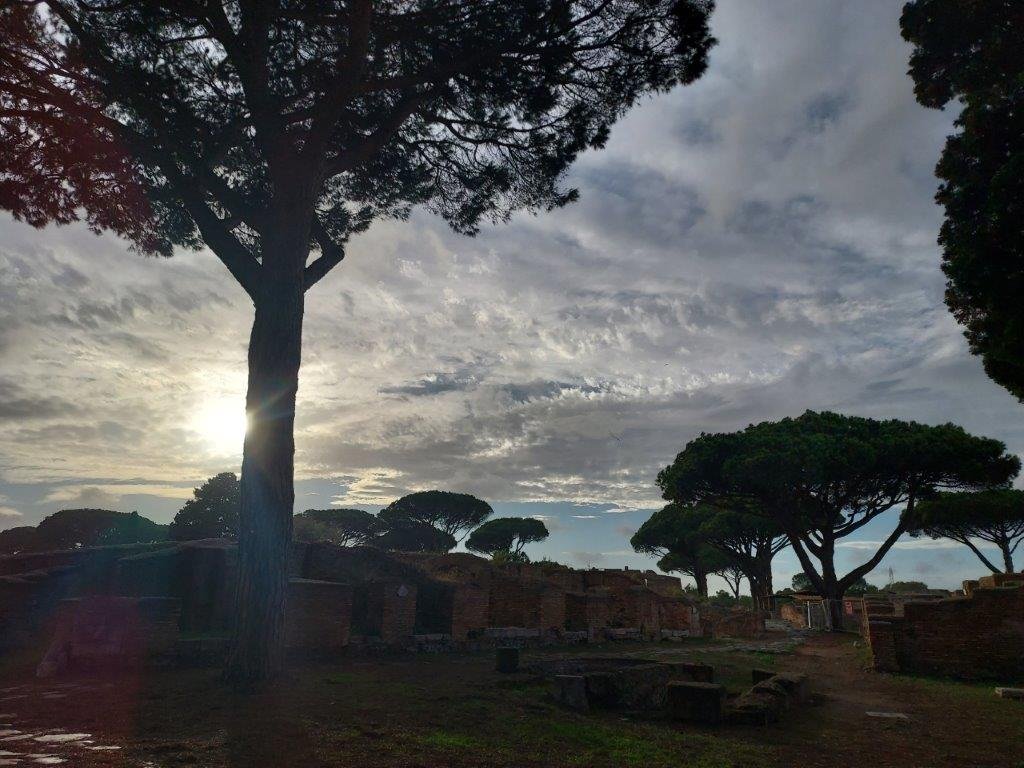
We flew our drone above the excavations, you see old temples, warehouse complexes, houses and thermal baths that are over 2000 years old. In case you think while watching: “Where is the sea?”: due to silting up, the coastline has slowly shifted and is now several kilometers away from the Tyrrhenian Sea.
Free champagne in the restaurant!
Next to the harbor was ‘Ristorante Diportista’ which is translated to Yachtsman restaurant. On the internet, the guests of this restaurant were full of praise for this restaurant: great dishes, great prices, worth a Michelin star! So of course, we had to eat there. And it was great. For instance, to start, Italians give you a basket of bread, but this was all home made, the black bread was made of ground mussels from the region. I really liked it a lot, so I asked them if I could be some pieces to take home to the ship. At the end of the 3 course meal, they gave me a little bag with 4 pieces in it. So kind! In Dutch, when we really enjoy the food we say: “you almost would eat your fingers with it”. In Italian they have this saying “Da leccarsi i baffi” which means “to lick your moustache”!
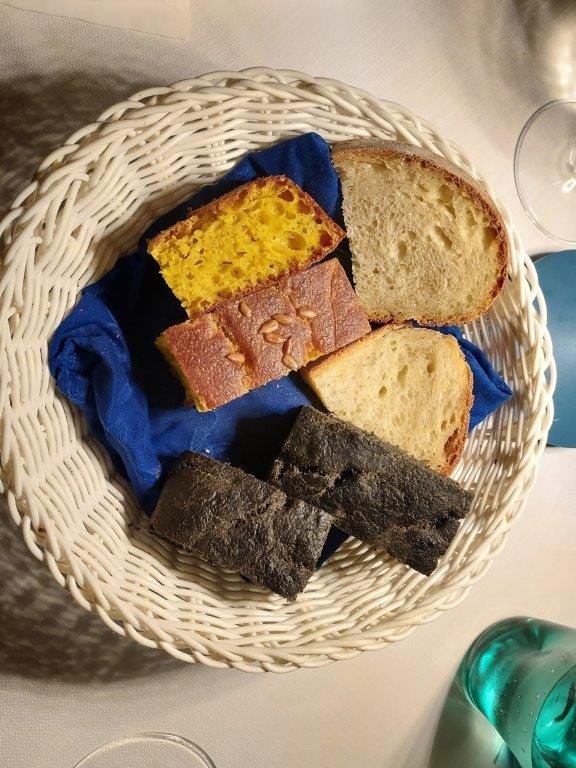

So we really had a good time in the harbor, enjoying the friendly crew walking around and always waving at us or saying hello and also the people of the restaurant. So to remember our good memories and also give the Blue Dolphin Marina a present from our side, we made this drone video for them and e-mailed it.
They really appreciated it and the owner said ’Next time you visit the restaurant, it will be all evening champagne at our expense’. Wow! So of course, our last evening in the harbor of Rome, we went back to the restaurant Diportista and enjoyed the meal and the drinks!
The city of the dead
Our last stop around the harbor of Rome, was Necropolis. I was not familiar with this term, but it turned out that it was the graveyard for Ostia Antica during all the centuries that it was an active city. And this graveyard was only recently discovered in 1925.

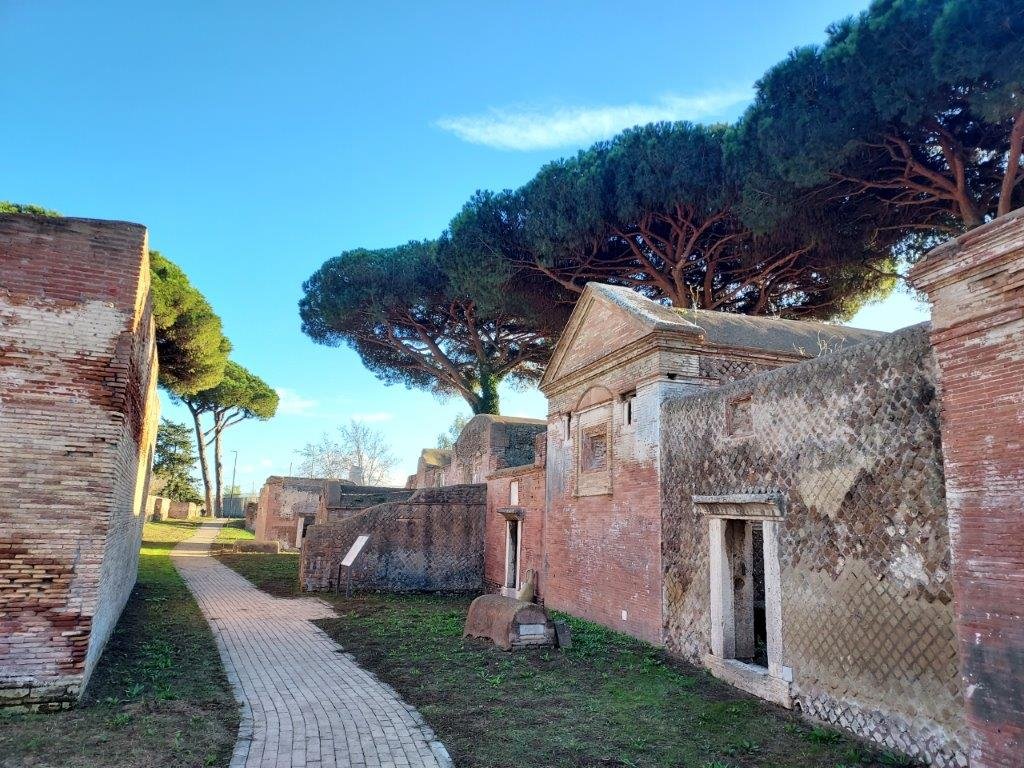
And it does not consist of gravestones as we know them, but currently of more than 200 grave buildings. Most graves found consist of a one- or two-story cell, usually square, to which an enclosure was often attached. The cells could be covered with barrel vaults or with a flat terrace, while the brick facades were enlivened by triangular facades and travertine elements.
Inscriptions in Latin or Greek can often be read on the facade stating the name of the owner, the dimensions of the grave, the testamentary provisions and the rules of use of the grave. This information allows us to reconstruct society, consisting of a middle class of traders, freedmen (liberated slaves) and small entrepreneurs.
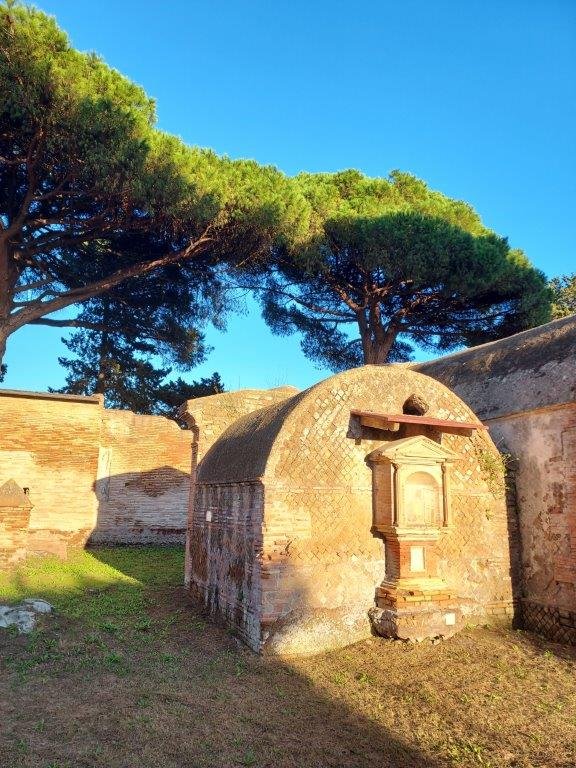

The activities performed by the deceased during his lifetime were often depicted on stones placed on the sides of the inscriptions; For example, you see the midwife assisting with the birth, the surgeon performing the operation, the blacksmith in his workshop, the grain merchant, etc.
After a great time in this area of Rome, we said goodbye to the Blue Dolphin Marina in Rome and continued sailing south, along the coast of the region of Lazio.

